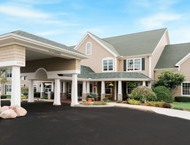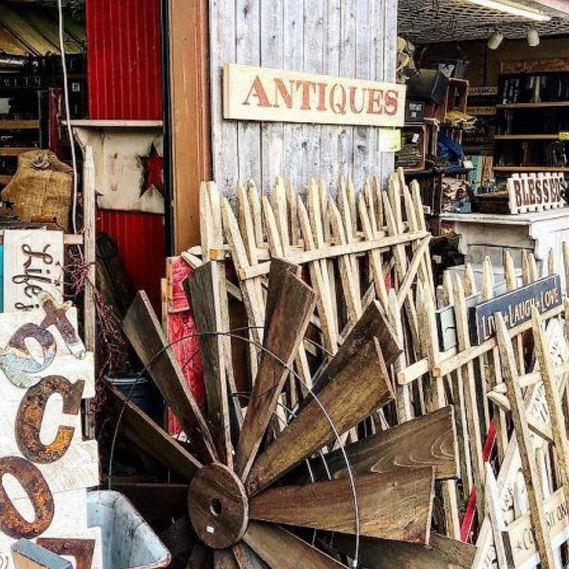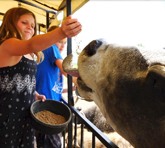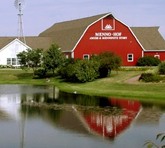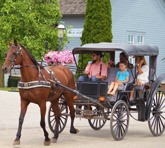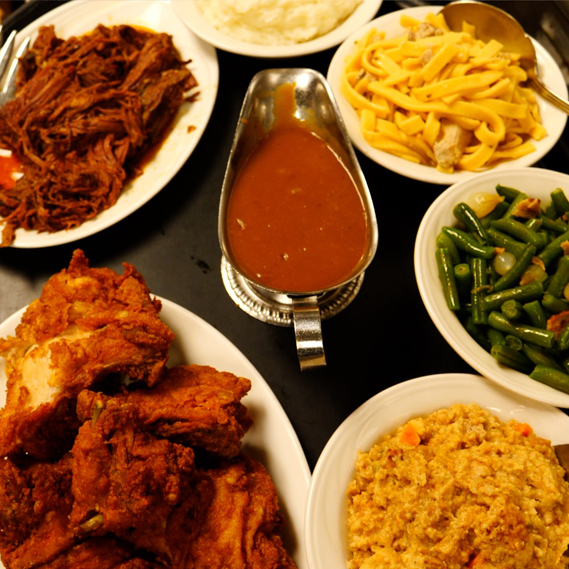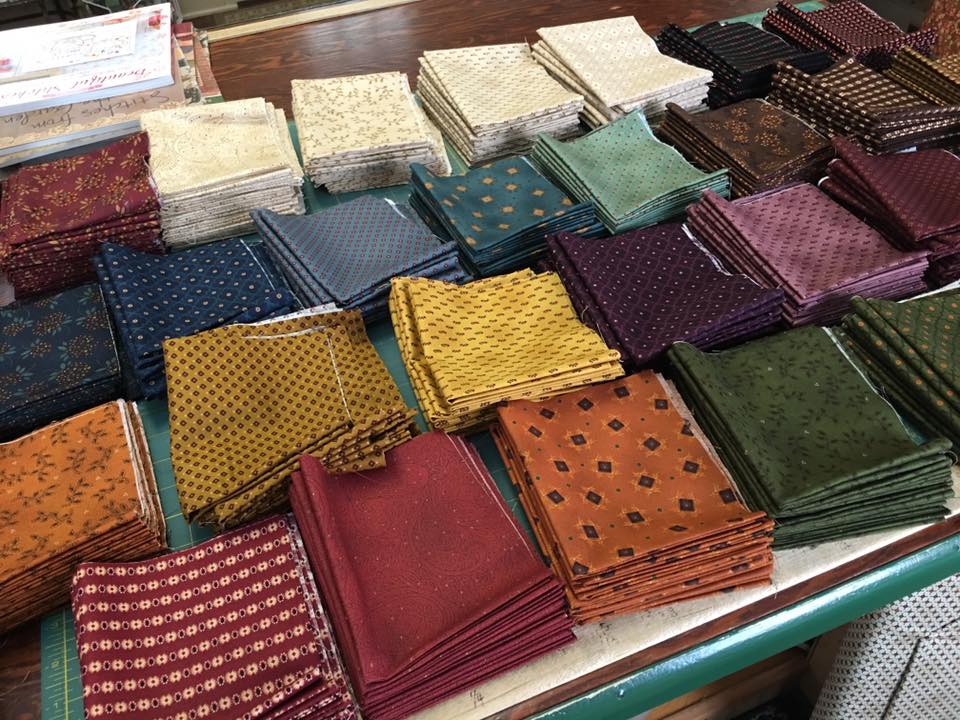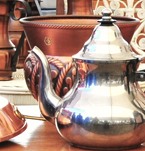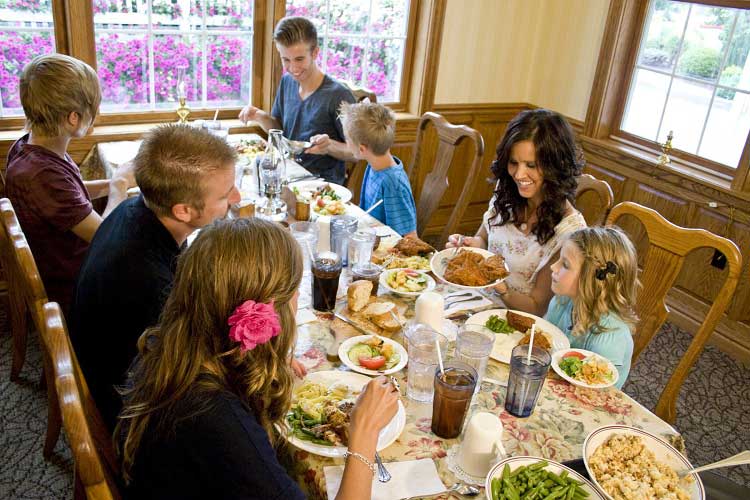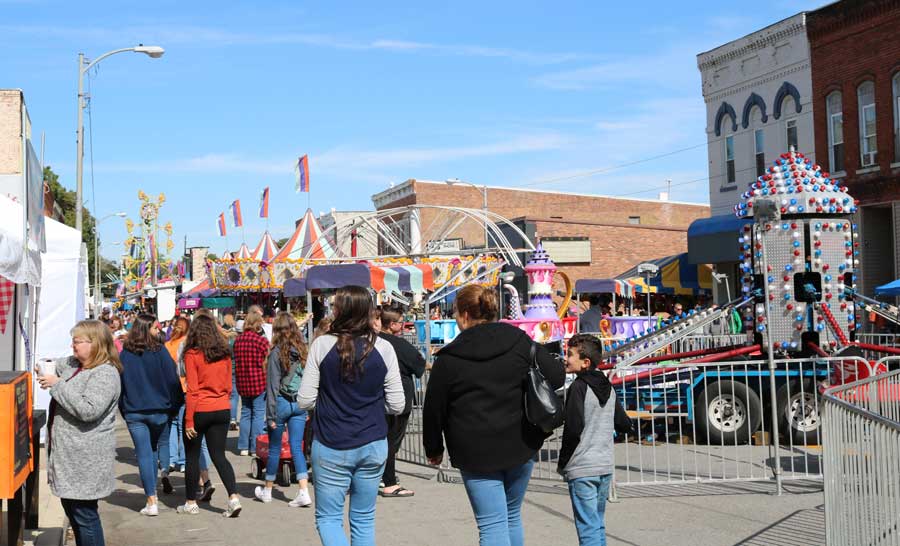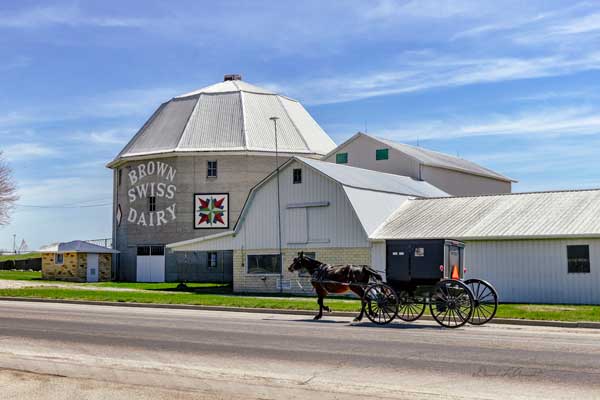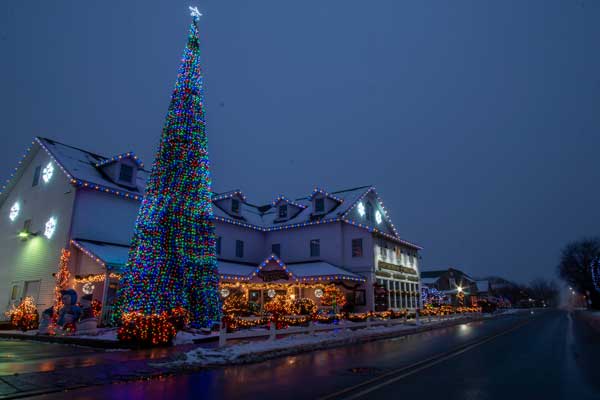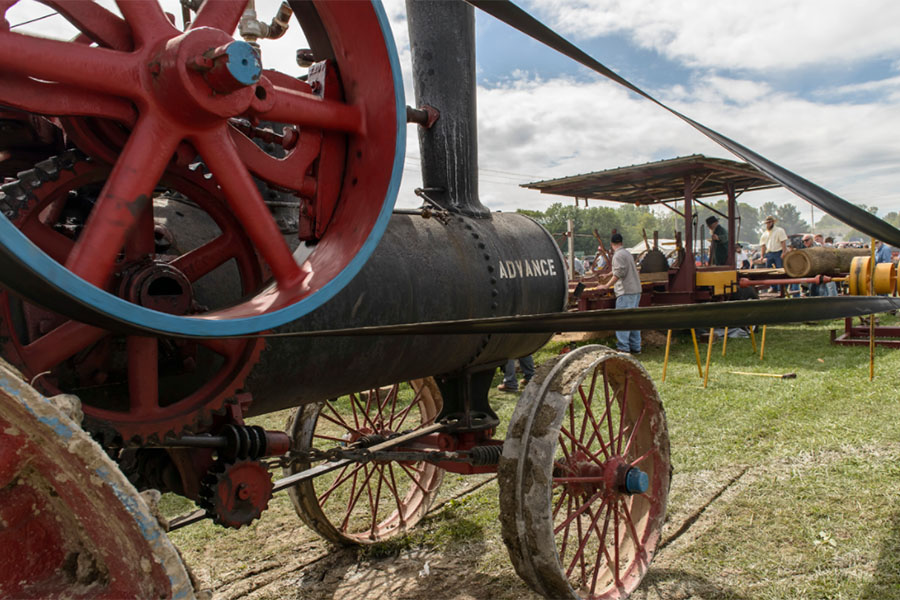
Itinerary

It was 1841. After a successful reconnaissance trip by leaders of their Amish community to scout out a new place to settle, four families with eight adults and seventeen children loaded their most necessary things in wagons and set off from Somerset County, Pennsylvania, heading west. In spring of 1842, eight more families arrived from Somerset County and in the fall, several more families arrived from Holmes County, Ohio. Initially, the settlers carved out subsistence farms from the Indiana wilderness and over time, transformed them into flourishing agricultural establishments.
Today, nearly 185 years later, mile after mile of white-fenced farms line beautiful rural roadways, populated with ever-present buggies at every turn. Buggies along the Amish Backroads Byway will not be occasional sightings, they are how the Amish get from place to place. Descendants of the pioneering families are spread throughout the area in what is now the third largest and most authentic Amish community in America. You’ll discover the surnames of the original families: Miller, Bontrager, Hershberger, Hochstetler, and Lehmann on mailboxes all along the Amish Backroads Byway in western LaGrange County.
When you explore the Amish Backroads Byway you can experience these traditions and the way of life firsthand. You may find yourself enchanted by the sight of horse-drawn buggies, likely carting Amish woodcrafters to their shops at the crack of dawn. As they diversified into cottage industries producing handmade furniture, quilts, rugs, and other artisanal items crafted with meticulous care, their offerings have become highly sought-after treasures to visitors and collectors alike.
All in all, your journey along the Amish Backroads Byway is meant to be relaxing and enjoyable as you travel the serene roads of this unique experience. And most importantly, take you time as you interact with the wonderful people along the Byway. Return home, refreshed and renewed and ready to get back to life.
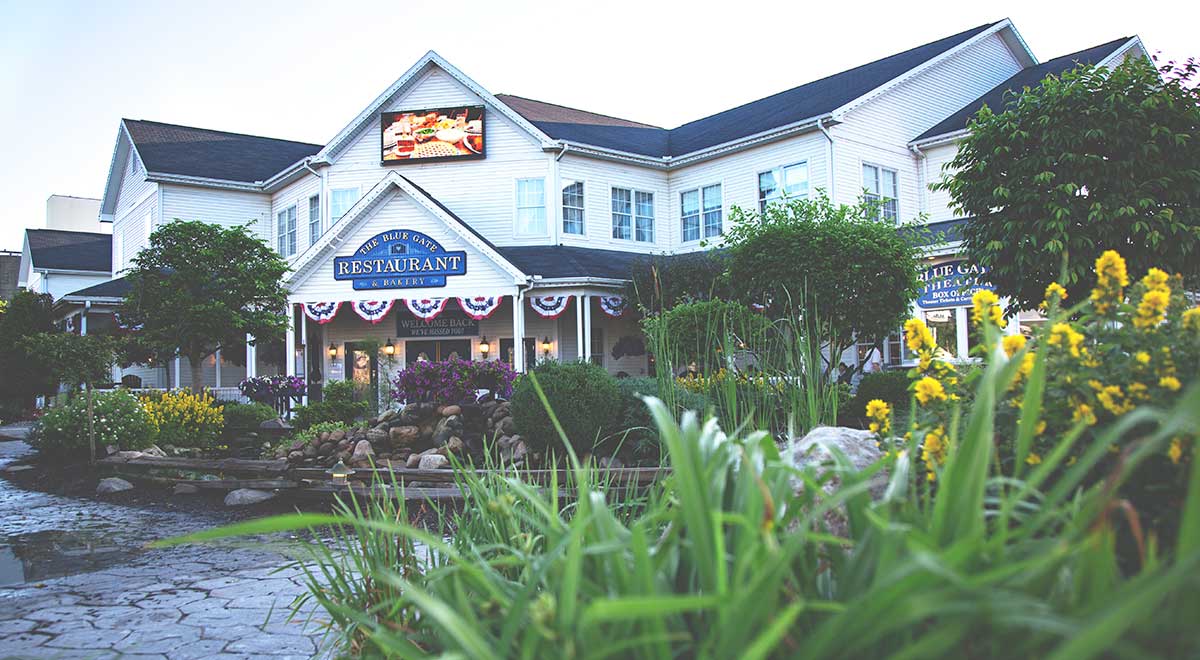
Day One
Plan to arrive in Shipshewana in time to have lunch and enjoy the afternoon.
Named after the local Potawatomi Chief who originally resided in the area, Shipshewana is now the hub of a thriving farming region and a major visitor draw. The town itself began when the S&MS Railroad constructed the Pumpkinvine Route (now a great walking trail) between Goshen, Indiana and Battle Creek, Michigan. After the route was completed in 1888, a railroad engineer laid out the town around the railroad stop. Residents of the tiny town of Shore that was located just a bit further south, began moving in. The first residence was constructed in 1889, the Methodist Church in 1890, and the Davis Hotel, now a collection of delightful shops, in 1891. A walk around Shipshewana following the colorfully painted signposts at each intersection is an absolute delight. To reach the start of the Byway in town, exit Interstate-90 at Exit 121. Take IN-120 west in Howe, turn south on N 675 W, and take CR 250 N to travel into town. Alternatively, take IN 120 west to IN 5 and travel south into Shipshewana.
Plan to have lunch at the Blue Gate Restaurant right in the center of town before touring Menno-hof to learn the story of the Amish in LaGrange County, Indiana.
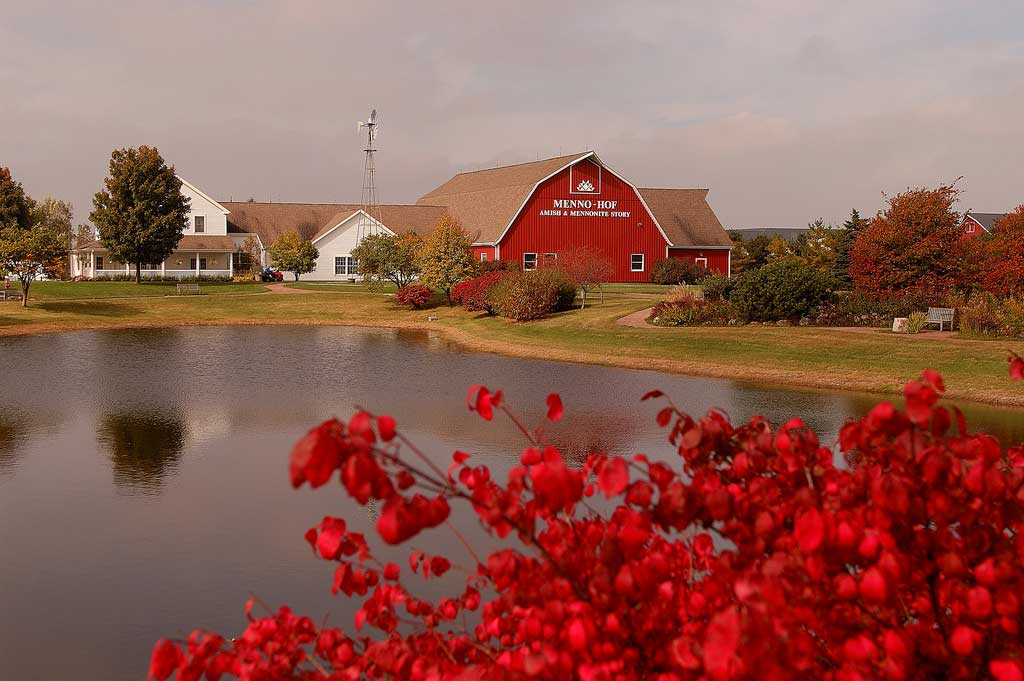
The Amish Mennonites in the region are descendants of the original settlers, all part of the Anabaptist movement that began in Switzerland in 1525. This group of believers, which ultimately divided into different sects, were convinced that state demands that all citizens be baptized as infants corrupted the church. They decided instead to baptize adults who could make a voluntary confession of faith (thus the word Anabaptist). Mennonites were named after Menno Simons, a Dutch priest who joined the movement in 1536. In 1693 a group led by Jacob Amman who believed that the Mennonites were losing their spiritual discipline and becoming too much like the world around them split from the Mennonites. A third group, the Hutterites, also began in the 1520s. Their beliefs caused all Anabaptists to be persecuted throughout Europe, leading to the decision to migrate to the United States. Menno-Hof, which reveals the stories of persecution, migration and the ultimate journey of these people to northern Indiana, is a must-see as you begin your journey on the Amish Backroads Byway.
510 South Van Buren Street, Shipshewana, IN 46565, 260-768-4117, M-Sat 10AM-5PM, Tours are available from 10AM to 3:45PM Adults $9.50/Family 2 Adults and Children $22.

Check into one of the many local hotels in Shipshewana and plan dinner at one of the myriad of restaurants in town. Or, Share a Meal with Leah to enjoy a home-made Amish dinner in a local home.
Enjoy the special experience of a meal on an Amish farm in an Amish home. Leah Bontrager and her husband Elson live on a six-acre Amish farm north of Shipshewana, Indiana. They moved into this English-built home in January 2024 and are in the process of converting it to Amish specifications. Leah likes bicycling, cardmaking, gardening, and travel. She can take groups of 2 to 12 people. Contact Leah by voicemail at (574) 825-1212 and she will return your call. (Sunday voicemails will be answered on Monday and no meals are offered on Sundays.)
48-hour notice is preferred when possible.

